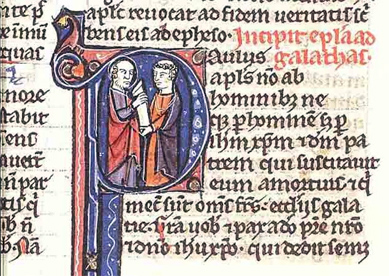Hebrews 11 is often viewed as an ode to faith. The word faith, pistis in Greek, is repeated some twenty-six times in this chapter alone, demonstrating its significance to the author’s overall message. The chapter begins with the author’s definition of faith; faith is “the assurance of things hoped for and the conviction of things not seen.” The author then proceeds to explain the exploits of various figures in the Hebrew Bible. This ancestral roll call commemorates the faith of these men and women and encourages its audience to imitate their examples.
This litany of the names serves as a theological account of the history of the faith community. Beginning with God, the writer explains in Heb 11:3 that it is by faith that the word of God (the unseen) creates the worlds (the seen). This faith is more than belief; it is also a particular kind of knowing, a knowledge that exists beyond our senses. Perhaps, more importantly, it is a persistent faith. As a result, the named heroes include some expected patriarchs and some unexpected characters. The writer is retelling a very particular history, one demonstrative of a specific kind of faithfulness. The faithful exhibit two main characteristics: they trust God and are obedient.
Who is named among the faithful?
The first named ancestor is Abel, not Adam. While this may seem like an odd starting point, Abel receives God’s approval because of his acceptable sacrifice. Perhaps as expected, Abraham, Isaac, and Jacob are all named since they are often understood to be progenitors of the faith. Esau is also named as having received his father’s blessing alongside his brother Jacob. Enoch and Noah are both named because they are described in the Bible as walking with God (Gen 5:22, Gen 6:9). Joseph is associated with the exodus, and Moses is described as choosing suffering over wealth. Though Joshua isn’t named, the incident of the walls of Jericho falling is mentioned. These characters support a narrative of the persistence of God’s faithfulness; they trust God to deliver on God’s promises.
The faithful include various categories of leaders: warriors, judges, prophets, and kings. Gideon, Barak, Samson, Jephthah, David, and Samuel, and the prophets are all named. Jephthah is a mighty warrior, driven from his home, who sacrifices his daughter and only child, honoring the vow he made to God (Judg 11). The prophet Deborah commands Barak to attack Jabin’s army, and he is triumphant but only with Deborah by his side (Judg 4:8). Samuel, the last in the line of Israel’s judges, was also the prophet who anointed Israel’s first king. And perhaps it is his words that best summarize what connects this group of leaders. Samuel said: “Does the Lord delight in burnt offerings and sacrifices as much as in obeying the voice of the Lord? To obey is better than sacrifice, and to heed is better than the fat of rams” (1Sam 15:22). The common thread that holds this passage together is that these flawed leaders ask for God’s intervention for their various victories; they are obedient and victorious (at times even despite themselves).
Are any women named among the faithful?
Rahab and Sarah are the only women named in the chapter, though there is a reference to the women who received their dead (Heb 11:35). Because women are not often included in genealogies, their presence is noteworthy. Sarah is mentioned as part of the Abraham narrative. Sarah is described as barren but is commended for her persistent faith in the unseen, a faith that results in her son of promise, Isaac. Rahab, a Canaanite woman in Jericho, however, stands alone. She defies the king by hiding the Israelite spies and, in doing so, protects her family. She expresses knowledge of the God of the Israelites (Josh 2:9-11). This knowledge, her courage, and her loyalty saves Rahab and her family’s lives. In a summative statement, the writer declares: “All are commended for their faith” (Heb 11:39).
Hebrews 11 demonstrates that stories of faith depend upon the writer’s perspective. The lessons of history are always contextual, told from a particular perspective with a particular emphasis. The audience of Hebrews and the ancestors described in the text are seemingly connected by feelings of alienation and their shared identity of unashamedly being God’s people. The ancestors remained faithful despite their suffering, and the audience is encouraged to imitate or participate in this faithfulness. Still, this is a partial list. We must also consider: Who is not named? Whose stories are excluded?
Understanding Hebrews as a sermon, as some scholars do, may help explain the silences, gaps, and emphasis found in this chapter. The overall message of Hebrews is one of encouragement. In the end, these heroes and heroines are described as saints in waiting. They belong to the great cloud of witnesses referenced at the beginning of chapter 12. These exemplars of the faith become witnesses for the faithful, part of a welcoming committee, waiting for all to be joined together. The audience shares in this heritage of faithfulness, joining together the past, present, and future children of God.




